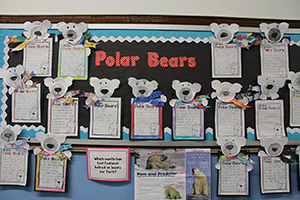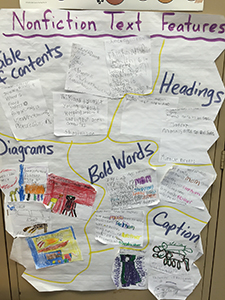These one-page guides can be used with any text.
They include graphic organizers into which students input relevant ideas and information.
Most of the guides end with a short constructed response task.
If students complete the guide independently and then
pair, compare, repair (improve), they will learn more!
Comprehension of Nonfiction Text—Science or Social Science
- Content Vocabulary
- Nonfiction Readers Analyze Structure and Viewpoints.
- Constructed Response Organizer
- Compare and contrast—a variation on the Venn
- Nonfiction Reading Strategies
Analyze Different Sources—Science of Social Science
- Compare Articles.
- Compare a Central Idea Across Multiple Texts.
- Compare three sources on the same situation.
- Compare Information in a video and an article about the same topic.
- Integrate information from 3 sources.
Evaluate Support for a Claim – Social Science or Science Issues
- Use Evidence to Show How a Writer Supports a Claim.
- Compare two sources that make the same claim.
- Evaluate the Strength of Evidence.
- Evaluate Support for a Claim.
- Think Clearly: Analyze Support a Position.
- Improve an Argument.
History Analyzers
- History Thinker: Analyze then Summarize.
- I Can Draw Conclusions: History Analysis
- Analyze History: Challenge, Choice, Changes.
More Nonfiction Analysis Guides and Sources
- Analyze History.
- Analyze History: Challenge, Csuse, Choice, Effects.
- Analyze Structures and Viewpoints.
- Central Idea Analyzer.
- Challenges, Choices, Changes, Chicago.
- Classify Facts and Opinions.
- Compare a Central Idea Across Multiple Texts.
- Compare and Contrast.
- Compare and Contrast Articles.
- Compare and Contrast Characters.
- Compare and Contrast Columns.
- Compare Articles.
- Compare an Idea Across Texts.
- Compare Two Sources.
- Comprehensive Assessment.
- Evaluate Support for a Claim.
- Graphic Analyzers for Grades 3-8.
- Grow Planner.
- History Profile.
- History Reader: Analyze Then Summarize Cause and Effects.
- How a Writer Supports a Claim.
- How to Figure Out the Central Ideas of a Nonfiction Text.
- I Got It Clear: Summary.
- Learning Reporter.
- List Important Details from a Nonfiction Text.
- Look for Ideas.
- Make a Nonfiction Techniques Glossary.
- Nonfiction Analyzer: The Writer's Techniques.
- Nonfiction Passage Questions.
- Nonfiction Reader.
- Picture a Paragraph.
- Primary Topic Reader: Words and Sentences.
- Prose Constructed Response Organizer.
- Smart Chart: Core Vocabulary.
- Take the PQROST Path.
- Think Clearly with a Big Idea.
- Think More: Analyze Craft and Structure.
- Topic Glossary.
All are designed as scaffolds that students then can use to write to explain their learning.
When students write based on their graphic organizer they develop the Common Core explanatory writing competence aligned with this CCSS
Writing Anchor Standard 2: Write informative/explanatory texts to examine and convey complex ideas and information clearly and accurately
through the effective selection, organization, and analysis of content.
Constructed Response Organizer
Nonfiction Reading Strategy Pre-Assessment
Graphic Organizer Assessment Rubric
Graphic Organizers to Guide/Assess NONFICTION READING
One-Page Nonfiction Passages to Apply Reading Skills
You can use the graphic organizers in this section to guide/assess student nonfiction reading
--including of these one-page passages.
Common Core Constructed Response Organizer

